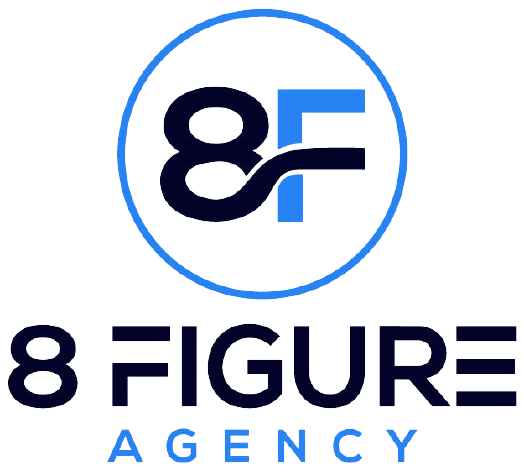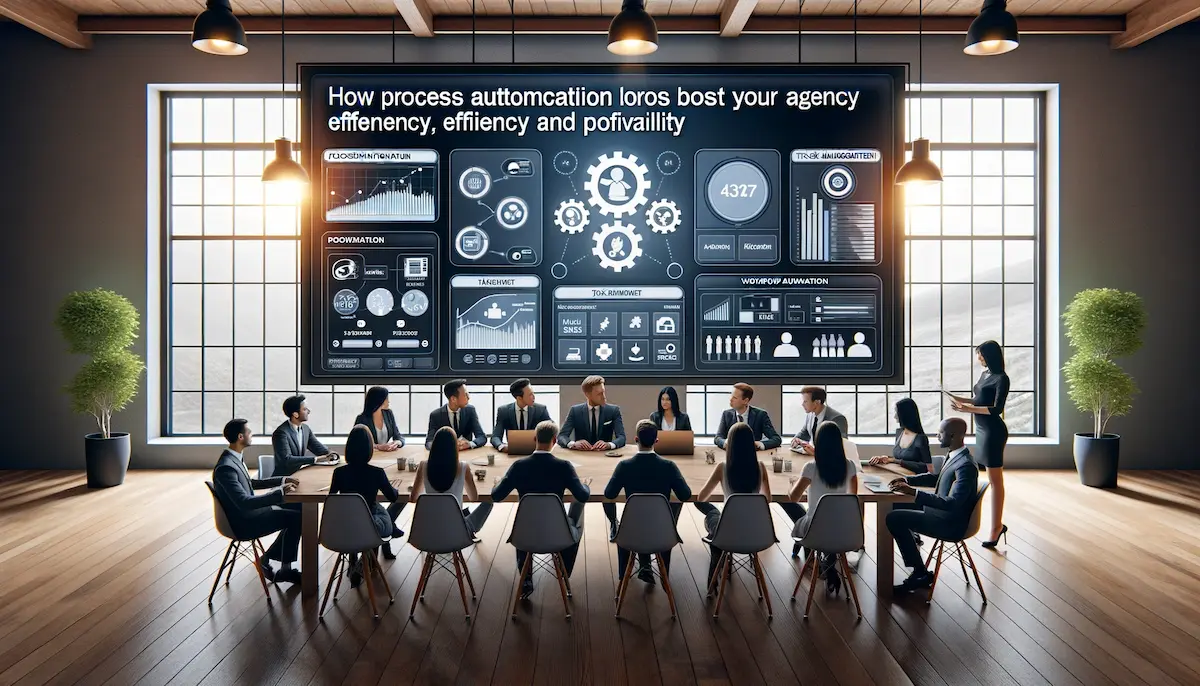In the ever-evolving landscape of marketing, agencies find themselves navigating through a digital labyrinth, seeking the most efficient and effective ways to reach their goals. Thankfully, with the help of automating marketing processes, marketing teams can streamline time-consuming processes and repetitive workflows for peak efficiency.
In this post, let’s unearth process automation to transform your agency’s landscape, making it more agile, more productive, and more profitable than ever before!
What is Process Automation?
Process automation refers to the use of technology and marketing automation software to streamline and execute repetitive tasks and workflows without the need for constant human intervention.
It offers a ton of benefits such as:
- increased efficiency
- cost savings
- improved accuracy
- faster turnaround times
- enhanced customer experience
- data insights and analytics
- scalability
Identifying Processes to Automate
Before considering marketing automation software, it is essential to evaluate the existing processes that businesses rely heavily on within the agency. This evaluation involves a thorough examination of each process to understand what is required to execute it.
Selecting Processes for Automation
Not all processes may be suitable for marketing automation, so it’s crucial to prioritize and select the right ones. Consider the following when choosing processes for automation:
- repetitiveness
- volume of work
- complexity
- impact on business goals
- return on investment (ROI)
Determining Automation Feasibility
After identifying potential processes for marketing automation, it’s essential to assess their feasibility to ensure successful implementation. First review the agency’s existing technology infrastructure to determine if it can support the chosen marketing automation tools or if any upgrades are necessary.
Then ensure that the necessary data and reporting required for marketing automation is accessible, in a suitable format, and can integrate with other existing systems within the agency’s ecosystem.
Finally, assess whether the selected processes comply with industry regulations and security standards as well as evaluate the readiness of the workforce to adapt.
Creating an Automation Plan
Creating an automation plan involves developing a structured and comprehensive marketing strategy to implement process automation within an agency. The plan outlines the specific goals, objectives, timelines, resources, and stakeholders involved in the automation project.
Defining Automation Goals
The first step in the marketing automation planning process is to clearly define the objectives and goals of automation which should be aligned with the agency’s overall business objectives. This should address specific pain points or areas for improvement identified during the evaluation of current processes.
Creating a Project Timeline
An essential aspect of the marketing automation solution is establishing a project timeline. This timeline outlines the various stages of the automation project and should have specific milestones and deadlines to ensure progress is on track within the defined timeframe.
Allocating Resources
Successfully automating marketing tasks requires the allocation of the appropriate financial resources and human capital. The automation plan should outline the budget required and it should identify the roles and responsibilities of team members involved in the automated processes.
Identifying Stakeholders
Stakeholders are individuals or groups who have a vested interest in the automation project and can influence or be affected by its outcomes. It’s crucial to identify key stakeholders, both within the agency and externally, such as clients or partners. Understanding their needs and concerns will help in shaping the marketing automation solution and gaining support for the project.
Choosing Automation Tools
Marketing automation tools are marketing automation software solutions designed to automate repetitive tasks, processes, or workflow automation within an agency. These tools come in different forms and should serve to streamline operations, improve efficiency, and reduce manual intervention, leading to increased productivity and profitability.
Popular Automation Tools for Agencies
There is a wide range of good marketing automation tools available in the market, each catering to different marketing automation workflow needs. Some popular automation software for agencies include Zapier, UiPath, HubSpot, Salesforce, IFTTT, Microsoft Power Automate (formerly Microsoft Flow), Mailchimp, and Google Cloud Composer.
Implementing Automation
Before proceeding with the implementation of marketing automation, agencies should take the following preparatory steps:
- Set Clear Objectives which define the goals and expected outcomes of marketing activities for the marketing automation initiative.
- Secure Buy-in from key Stakeholders, address their concerns, and demonstrate the value of a good marketing automation platform in achieving organizational objectives along their automation journey.
- Allocate Resources to ensure that the necessary financial and human resources are allocated to the automation project.
- Establish a dedicated Automation Team responsible for overseeing the marketing automation platform.
- Map Processes Thoroughly with a detailed understanding of the processes targeted to use marketing automation.
- Select Suitable Automation Tools based on the process requirements and criteria that best fit the agency marketing team’s needs.
Steps for Successful Implementation
- Pilot Testing the automation on a small scale allows the marketing team to identify and address any issues before full-scale implementation.
- Training and Upskilling employees who will be using such tools which enable them to work effectively with the new technology and understand its benefits.
- Gradual Rollout of the automation in phases rather than all at once reduces the risk of disruption and allows for fine-tuning based on feedback.
- Continuously Monitor and Evaluate the performance of the automated marketing campaigns and marketing processes.
- The Iterative Approach allows for regular review and updates in the marketing automation processes to adapt to changing requirements.
- Documenting Changes in the automation processes, including configurations, and settings is valuable for troubleshooting and future reference.
Common Challenges and How To Overcome Them
Implementing automation may come with certain challenges such as:
Resistance to Change
Employees may be resistant to adopting automation due to fear of job loss or unfamiliarity with new technologies. Address these concerns through proper communication, training, and highlighting the benefits of marketing automation platforms.
Integration Issues
Automation tools may face compatibility issues with existing systems. Conduct thorough testing and ensure that the selected tools can integrate smoothly with the agency’s infrastructure.
Data Security Concerns
Address data security concerns by implementing robust security measures, data encryption, and access controls to safeguard sensitive information.
Complex Processes
Some operations can be challenging to automate, especially those involving unstructured data, customer journeys, or human decision-making. Start with simpler processes and gradually tackle more complex ones.
Lack of Expertise
If the agency lacks expertise in marketing automation platforms, consider partnering with a consulting firm or seeking external help to ensure a smooth implementation.
Cost Overruns
Keep a close eye on the project’s budget and resource allocation to avoid unexpected cost overruns. Be prepared to make adjustments as needed to save time.
Monitoring and Maintaining Automation
Monitoring and maintaining marketing automation software are essential aspects of the automation lifecycle. Once marketing automation tools are implemented, it requires ongoing attention to ensure their continued effectiveness, efficiency, and reliability to prevent downtime, data errors, and disruptions to critical workflow automation.
Metrics to Track
- Process Efficiency
- Error Rates
- Resource Utilization
- Cost Savings
- Customer Satisfaction
- Compliance and Audit Trail
Preventative Maintenance
To keep marketing automation running smoothly, agencies should implement preventative maintenance measures involving proactive actions to avoid potential issues including:
- Regular Updates and Patches
- Data Backup and Recovery
- Security Audits
- Performance Optimization
Troubleshooting and issue resolution
Despite preventive measures, issues can still occur in marketing automation systems. Quick and effective troubleshooting is vital to minimize downtime and disruptions such as:
- Monitoring Alerts
- Root Cause Analysis
- Documentation
- Collaboration and Communication
- Escalation Procedures
Measuring the Impact of Automation
Key Performance Indicators to Measure
- Process Efficiency
- Error Rates
- Cost Savings
- Productivity
- Customer Satisfaction
- Revenue Growth
- Compliance and Accuracy
- Resource Utilization
Evaluating ROI
To determine the return on investment (ROI) of marketing activities, agencies should compare the total costs associated with the automation initiative against the benefits gained. The ROI calculation includes both direct cost savings and indirect benefits, such as increased productivity and customer satisfaction.
The benefits should encompass all the KPIs identified earlier, while the costs should include expenses related to marketing efforts, training, infrastructure upgrades, and ongoing maintenance.
Identifying Areas for Improvement
Even if the initial impact of marketing automation is positive, there is always room for improvement.
- Collect Feedback
- Analyze Data
- Benchmarking
- Continuous Improvement
- Evaluate New Technologies
- Employee Feedback and Training
Integrating Automation with Other Systems
System integration refers to the process of connecting and combining different software applications, databases, or systems to work together as a cohesive unit. It involves integrating marketing software automation tools with existing systems, applications, and databases within an agency’s technology ecosystem.
Benefits of System Integration
- Data Synchronization
- Efficiency
- Enhanced Visibility
- Improved Customer Experience
- Resource Optimization
Common Challenges and How to Overcome Them
System integration can be complex, and agencies may face certain challenges during the process.
Data Inconsistencies
Data in different systems may be structured differently. Standardize data formats and establish data mapping to ensure consistency.
Integration Complexity
Some integrations may be more intricate than others. Start with simpler integrations to gain experience before tackling more complex ones.
Security Concerns
Secure data transmission and implement access controls to protect sensitive information during integration.
Lack of Expertise
Seek assistance from integration specialists or consultants if the agency lacks in-house expertise in system integration.
Communication and Collaboration
Encourage open communication and collaboration between teams responsible for different systems to ensure smooth integration.
Scalability
Ensure that the integrated systems can handle increased workloads and adapt to the agency’s growing needs.
Overcoming Resistance to Automation
Common Objections to Automation
Resistance to automation can arise from various concerns and misconceptions:
- Job Insecurity
- Lack of Understanding
- Change Management
- Perceived Complexity
- Loss of Control
Strategies for Overcoming Resistance
To successfully address resistance to marketing automation, agencies can implement the following strategies:
Transparent Communication
Provide clear and transparent communication to the marketing team about the goals, benefits, and expected outcomes of the marketing automation process. Address concerns and misconceptions openly and honestly.
Employee Involvement
Involve employees in the marketing automation planning and decision-making process. Encourage them to provide input, share their experiences, and suggest improvements.
Highlighting Benefits
Emphasize the positive impact of automation on employees and the organization. Focus on how marketing automation can streamline marketing processes, reduce manual workload, and free up time for more strategic tasks.
Addressing Job Security Concerns:
Reassure employees that marketing automation is meant to augment their abilities, not replace them. Emphasize that automation will enable them to focus on higher-value repetitive tasks and expand their skill sets.
Training and Upskilling
Provide comprehensive training to employees on how to use automation tools effectively. Upskilling employees will boost their confidence and comfort with the new technologies.
Gradual Implementation
Implement marketing automation in a phased manner, starting with less critical processes. This approach allows employees to adapt gradually and gain confidence in the new technology.
Championing Success Stories
Share success stories of automation initiatives within the organization. Highlight how marketing automation has benefited other teams or departments.
Training and Education for Employees
To ensure a smooth transition to marketing automation, agencies should invest in training and education for employees:
- Basic Automation Training
- Tool-Specific Training
- Hands-on Workshops
- Continuous Learning
- Internal Knowledge Sharing
- Empower Employee Experimentation
Scaling Automation
When implementing a marketing automation strategy, it is crucial to plan for future growth and scalability to ensure that the automation initiative remains effective as the agency expands. Some key considerations include:
- Flexible Architecture
- Resource Allocation
- Standardization and Reusability
- Performance Testing
- Scalable Infrastructure
- Cross-Department Collaboration
Expanding Automation to Other Departments
To maximize the benefits of marketing automation, agencies can expand automation to other departments beyond the initial pilot phase. Some steps to consider when scaling automation across departments include:
- Assessing Needs
- Building a Center of Excellence
- Demonstrating/Highlighting Success
- Offering Training and Support
- Collaborative Implementation
Challenges and Considerations for Scaling
Scaling marketing automation can present certain challenges that agencies should be mindful of:
Integration Complexity
Scaling marketing automation may require integrating with a larger number of systems and applications, increasing the complexity of the integration process.
Cultural Resistance
Different departments may have varying levels of comfort with automation. Address any cultural resistance through effective communication and collaboration. We can show to motivate, inspire and demand greatness.
Resource Constraints
Scaling marketing automation may require additional resources, both in terms of budget and skilled personnel, which may present challenges for some agencies.
Data Management
As marketing automation expands, managing data becomes critical. Ensure that customer data, integrity, security, and privacy are maintained throughout the scaling process.
Regulatory Compliance
Different departments may operate under unique regulatory requirements. Ensure that marketing automation processes comply with relevant regulations.
Monitoring and Governance
Implement a robust monitoring and governance framework to track the performance of automation across multiple departments and ensure adherence to best practices.
Case Study 0f Automating Marketing Processes
Alibaba: Social Media Marketing Automation and Sales Automation:
Some of the most important ways Alibaba relies on this technology for retail are through social media automation, marketing campaigns shipping, logistics, predictions of customer behavior, and marketing descriptions.
For example, using NLP, the website can automatically see customer lifecycle and generate product descriptions for clients. They also use analytics to predict what paying customers might want to buy based on past decisions. The agency also used marketing channels, email marketing automation, sales automation tools, and digital advertising to track website visitor behavior and google analytics enabling them to identify potential leads and optimize their conversion funnel. As a result, the agency experienced increased efficiency in marketing operations, reduced manual marketing effort, and a significant boost in client satisfaction due to improved performance.
Security and Privacy Considerations
Security Risks Associated with Automation
While marketing automation can bring significant benefits, it also introduces potential security risks that agencies should be aware of:
- unauthorized access
- malware and ransomware
- data leakage
- insider threats
- inadequate authentication
Strategies for Mitigating Security Risks
To enhance security when implementing marketing automation, agencies can adopt the following strategies:
- robust access controls
- secure APIs and integration
- regular updates and patching
- encryption
- monitoring and auditing
- employee awareness
- secure configuration management
Compliance with Privacy Regulations
Automation processes often involve handling personal data, making it essential for agencies to comply with privacy regulations. Some key considerations include:
Data Minimization
Only collect and process the minimum amount of personal data required for automation processes. (We can show you how!)
Consent and Transparency
Obtain informed consent from individuals whose data will be processed through marketing automation on social media platforms. Provide clear information about data usage and processing activities.
Data Retention
Define data retention periods and delete or anonymize personal data once it is no longer needed for automation purposes.
Data Access Rights
Ensure that individuals have the right to access, rectify, and delete their data as per privacy regulations.
Data Protection Impact Assessments (DPIAs)
Conduct DPIAs to assess and mitigate privacy risks associated with automating marketing processes.
Privacy by Design
Incorporate privacy considerations into the design and implementation of marketing automation processes from the outset.
Third-Party Compliance
If using third-party automation tools or services, verify that they adhere to privacy regulations and contractual obligations.
Ethics and Social Responsibility
Impacts of Automation on Society
Automation has far-reaching impacts on society, both positive and negative:
Positive Impacts
Automation can lead to increased efficiency, reduced manual labor, and improved productivity, benefiting industries and economies. It can also enable the creation of new job roles and opportunities in emerging fields related to marketing automation, customer relationship management, and technology.
Negative Impacts
Automation can result in job displacement and loss, especially for those in roles that can be easily automated. This can lead to economic inequality and social challenges and ethical concerns if not managed appropriately.
Ethical Considerations in Automation
Agencies implementing automation should be mindful of several ethical considerations:
- job displacement
- privacy and data protection
- bias and fairness
- transparency and accountability
- social impact
Responsibility of Agencies in Implementing Automation
Agencies hold a significant responsibility when implementing automation:
- responsible use
- stakeholder engagement
- continuous assessment
- regulatory compliance
- mitigating negative impact
- advocacy for ethical standards
Future of Automation in Agencies
The future of automation in agencies will be shaped by various technology trends, including:
- Artificial Intelligence (AI) Advancements
- Robotic Process Automation (RPA) Evolution
- Hyperautomation
- Intelligent Automation Ecosystems
- Internet of Things (IoT) Integration
Opportunities for Agencies
The future of marketing automation presents various opportunities for agencies:
Increased Efficiency
Automation will enable agencies to streamline processes, reduce manual efforts, and achieve higher levels of efficiency.
Enhanced Customer Experience
By automating customer interactions, marketing and sales teams, and marketing professionals can deliver personalized experiences, qualified leads, effective marketing automation thereby improving customer satisfaction.
Data-Driven Insights
Automation will provide agencies with valuable data insights, enabling better decision-making and more informed strategies.
Cost Savings
Through automation marketing software, agencies can optimize resource allocation, leading to cost savings and increased profitability.
Final Thoughts
Process automation offers agencies a myriad of benefits leading to increased profitability and overall growth.
As agencies embrace marketing automation, they must prioritize ethical considerations, ensure data security and privacy, and invest in the upskilling of their workforce. Marketing automation, when adopted responsibly, will enable agencies to navigate complex challenges, and multiple channels, save time, and seize new opportunities to excel in their respective domains.
8 Figure Agency is here to empower marketing agencies to master automation to achieve 8-figure success.



















































